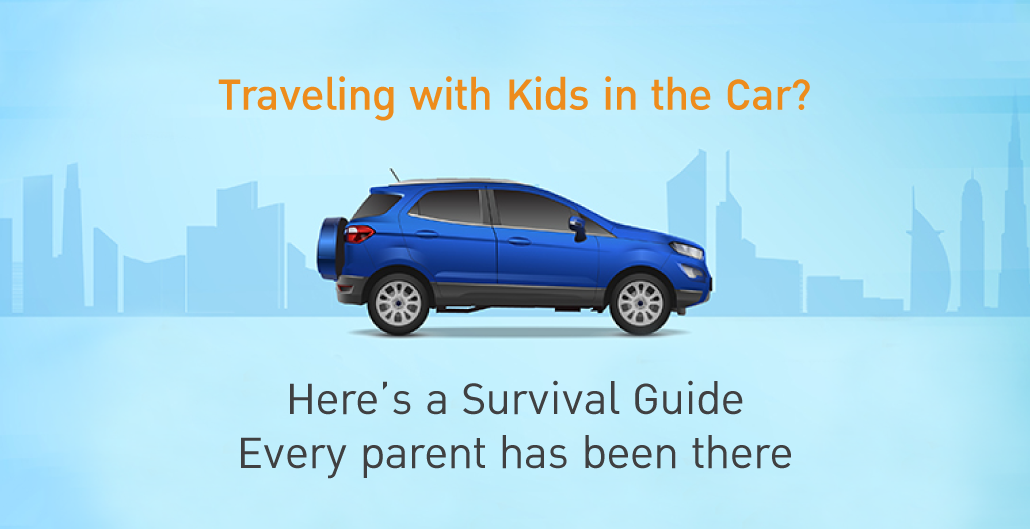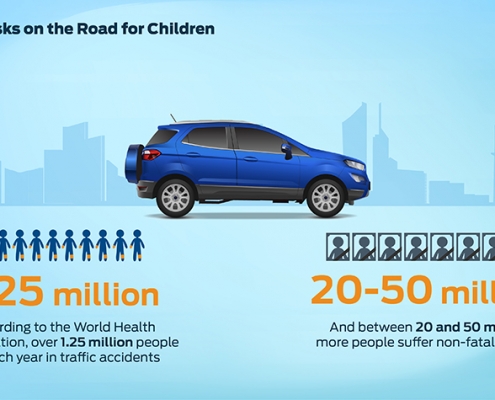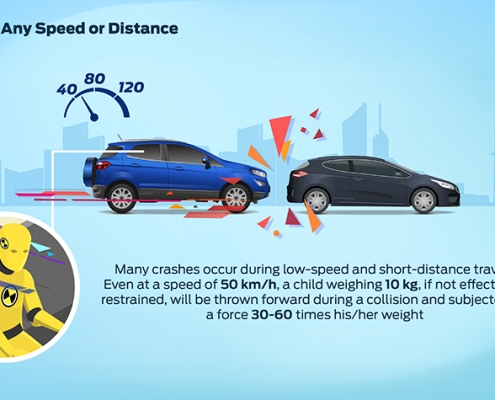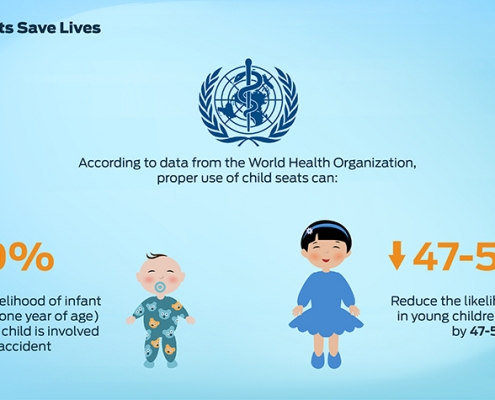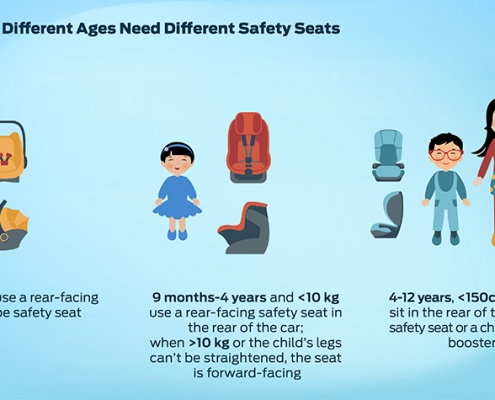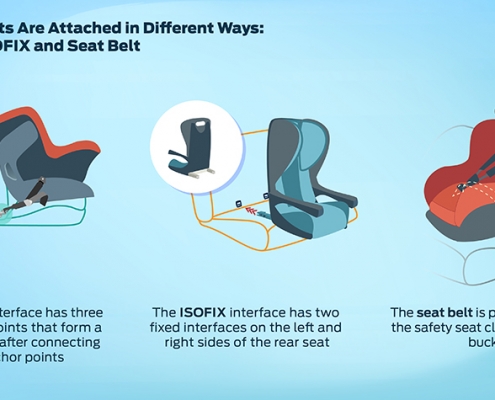Traveling with Kids in the Car? Here’s a Survival Guide Every parent has been there
You’re on a family road trip to escape the city or just driving across town to a restaurant, and your child is not happy. They’re crying and won’t sit still. It’s understandable – after an hour on the road, even the adults in the car can feel restless. But active children can distract drivers, which can lead to accidents. While it can be upsetting to hear a child cry, it’s unlikely there is an emergency. They are probably just bored, hungry or eager to get outside and play. Here are seven ways to keep children safe, comfortable and happy in the car.
-
Purchase the appropriate child safety seat.
“Seat belts and airbags are designed for passengers taller than 145 cm and heavier than 36 kg,” says Cynthia Zhang, vehicle regulations manager, Ford China, “so newborns and young children should be properly secured in a rear seating position in a child safety seat that is designed for their age, height and weight.
“While car seat usage around the region is on the rise, room for improvement remains. According to a new study by Ford Motor Company, 77 percent of parents in China who drive a car use safety seats for every trip they take, while this number drops to 54 percent for non-driving parents. Over one-third of parents in South Korea allow children to sit on someone’s lap while driving. And in Thailand, 63 percent of parents with young children say they use a car seat, while others allow children to sit on a lap. But this is not safe. In case of sudden braking, the force of acceleration can be as great as 4G and holding a child does not prevent injury.
“Children should use proper child safety seats from the first time they get into a car,” says Zhang. “That way, the child will see their safety seat as a natural part of traveling.”
-
Regularly change your child’s car seat.
Children grow fast, so parents need to be prepared to buy multiple car and booster seats according to a child’s age, height and weight throughout the childhood years. But avoid common mistakes, such as turning children forward too early or using booster seats too soon.
-
Install your child’s car seat correctly.
According to one report, there is a 46 percent error rate in installing child safety seats. Ensure proper installation and read the owner’s manual for both the seat and your vehicle.
Airbags can kill or injure a child in a child seat, so never place a rear-facing child seat in front of an active airbag. Child seats are often secured with standard seat belts, but for added protection, get a child seat that is installed with ISOFIX attachment points. An ISOFIX seat conveniently plugs into dedicated latch points in the vehicle.
-
Set a good example.
Safety awareness starts with a child’s caregivers, so it’s essential that parents be good role models. Despite other technological advancements, seat belts
are still a top life-saving device in an accident, so parents should always buckle up to set a good example for kids.
-
Establish rules for inside the car.
Parents should establish – and enforce – rules related to riding in cars. For children old enough to understand, a fundamental family rule should be: ask permission first, whether it’s to open a window or change the music.
-
Establish rules for outside the car.
Even when outside of the car, children are at risk for an auto-related injury, so never let them out of your sight when cars are present. “A child’s small size makes them easier to miss when drivers are parking and backing up,” cautions Zhang. Hold your child’s hand when out and about, on sidewalks, roads and where cars are parked.
-
Keep children comfortable and occupied.
Pack a few of your child’s favorite books and soft toys to keep your child entertained and help prevent driver distractions. Snacks and drinks can also calm your child, with scheduled stops for bathroom breaks. Finally, children may fuss because they are too cold or hot, so monitor the temperature in the back seat.
“And never leave children unattended in your vehicle. Exposure to high temperatures for even a short time can cause death or serious heat-related injuries, including brain damage,” says Zhang. “Small children are particularly at risk.
Even when you follow these guidelines, children may still grumble and wriggle in the backseat. But stay calm and find a safe place to pull over and take a break if necessary. Always be careful on the road – the next generation of drivers is watching what you do.
About Ford Motor Company
Ford Motor Company is a global company based in Dearborn, Michigan. The company designs, manufactures, markets and services a full line of Ford cars, trucks, SUVs, electrified vehicles and Lincoln luxury vehicles, provides financial services through Ford Motor Credit Company and is pursuing leadership positions in electrification, autonomous vehicles and mobility solutions. Ford employs approximately 201,000 people worldwide. For more information regarding Ford, its products and Ford Motor Credit Company, please visit www.corporate.ford.com.

